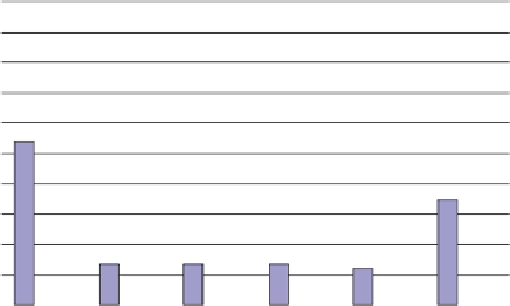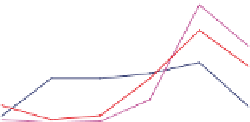Environmental Engineering Reference
In-Depth Information
100
Zn
Cu
Pb
90
80
70
60
50
40
30
20
10
0
1
2
3
4
5
6
Layers
Fig. 4
Column C2: metal mass ratio
70
70
Zn (pH2)
Cu (pH2)
Pb (pH2)
Zn (pH6)
Cu (pH6)
Pb (pH6)
60
60
50
50
40
40
30
30
20
20
10
10
0
0
1
2
3
4
5
6
1
2
3
4
5
6
Layers
Layers
Fig. 5
Layer relevance in overall retention of Cu at pH2 and pH6
Cu and Pb, when compared with the corresponding values at pH2. In the top sand
layer, higher heavy metals retention values of Zn and Pb were obtained (Fig.
4
).
For Zn, the layer relevance in the overall retention is similar at pH2 and pH6,
which is possibly due to the verified Zn breakthrough. For Cu and Pb, higher retention
relevance is verified in the upper reactive layers as shown in Fig.
5
.
Column C3
The results obtained in Column C3 are similar to those obtained in Column C2.
The metals released at pH6 were slightly higher for Zn (about 15%) than those
verified in column C2, and almost the same values for Cu and Pb, near 5% (Fig.
6
).
The top layer of the reactive filter demonstrates higher retention than the
lower layers, possibly due to the absence of a breakthrough occurrence. Higher
resistance to desorption of heavy metals present in the reactive layers is verified.































































